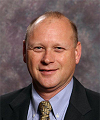 EMAIL
INTERVIEW
– Larry Andriunas and Ken
Sinclair
EMAIL
INTERVIEW
– Larry Andriunas and Ken
Sinclair
|
February 2018 |
[an error occurred while processing this directive] |
| |
 EMAIL
INTERVIEW
– Larry Andriunas and Ken
Sinclair
EMAIL
INTERVIEW
– Larry Andriunas and Ken
Sinclair
Larry Andriunas is President of Kodaro, leading their team of engineers
in their effort to develop software that securely unlocks building data
for improved occupant comfort, increased operational efficiency and
reduced energy costs. Prior to Kodaro, Andriunas spent more than 15
years in various positions at Honeywell, most recently as Director of
Commercial Sales.
| Articles |
| Interviews |
| Releases |
| New Products |
| Reviews |
| [an error occurred while processing this directive] |
| Editorial |
| Events |
| Sponsors |
| Site Search |
| Newsletters |
| [an error occurred while processing this directive] |
| Archives |
| Past Issues |
| Home |
| Editors |
| eDucation |
| [an error occurred while processing this directive] |
| Training |
| Links |
| Software |
| Subscribe |
| [an error occurred while processing this directive] |
Sinclair: I saw you were at AHR in the KMC booth. What’s the relationship there?
Andriunas: KMC referred to us as their “Dell Edge Gateway cousin” in a recent blog article,
and I think that’s a nice way to describe it. They’ve been with Dell
since the beginning of that company’s journey with the Edge Gateway.
Now that we’ve ported Niagara to the Gateway, there are some
interesting ways our two companies are coming together. We thought
appearing together at AHR would give us a chance to talk about a
complete integrated systems approach to advanced building solutions.
Dell was also with us in the booth. It went great.
All of the “IoT” changes coming to building automation are great
opportunities for companies to work together in new ways. We’ve always
been a tight-knit industry, and I imagine those connections are only
going to get wound closer together as time goes on.
Sinclair: It seems like you released one version of the Niagara port a while back, but now you’re out with a new one?
Andriunas: There are
two different ways to get Niagara ported to the Dell Edge Gateway.
First, we partnered with IoTium to offer the Niagara 4 port on the
first version of the Dell Edge Gateway last year. This is still a good
solution for buildings that need high levels of network security. What
we released recently was the Niagara 4 port for the Ubuntu Core 16
operating system, which is a Dell supported OS. Figuring out the Ubuntu
Core 16 operating system also allowed us to port Niagara to the Edge
Gateway 3002 model, which has a smaller footprint and wasn’t available
when we first released our Niagara 4 port.
Sinclair: Did you work with both Tridium and Dell on the port?
Andriunas: Yes,
we had to get the port approved by Tridium before we could release it
because there are specific ways the Niagara framework needs to interact
with the Dell hardware.
Sinclair: There
has been excitement around the Dell Edge Gateway and the potential it
offers to have such a familiar brand name enter into the building
automation industry. But have there been any successful applications
that you’ve been involved with at this point?
Andriunas: It’s a fair
question. With the release of the Niagara 4 port for the Ubuntu Core 16
OS, we think adoption is going to increase this year. But we have
already been involved with a couple deployments to date. There’s a
commercial building out in New York City that one of our big integrator
customers just completed. We don’t have permission yet to share the
full story, but there is a Dell Edge Gateway running Niagara 4 there.
Our team is also currently using the Dell Edge Gateway with Niagara 4
port in a data center application with a major chip manufacturer based
in the Bay Area.
[an error occurred while processing this directive]Sinclair: The CEO of EasyIO Europe made an assertion in our January issue
that I’m curious to get your take on. When asked about why his company
is choosing open source frameworks, he said: “people don’t want to pay
for software anymore.” As president of a software company, has this
been your experience?
Andriunas: I would
agree that is true when people purchase hardware and then need software
in order to run the hardware. But the real sentiment isn’t so much that
there is a cost to software, rather what is the real value the software
brings to the project or application. Also, just because the software
is open source doesn’t mean it’s free. Open source does suggest that it
may be more cost effective to develop on, but even that can come
against issues if the open source software doesn’t have a large enough
community of developers working on their free time to perfect every
aspect of the software.
We ran into the issue of paid versus free software when we developed the Haystack+ driver.
Since the old nHaystack driver for Niagara AX was free people were
reluctant to purchase our N4 driver even though we added extra
functionality and the cost was relatively low. Recognizing this, we changed our licensing model
to offer a free version with the basic functionality that was available
with nHaystack. For added functionality, there is a small licensing
fee. So our approach is to learn from our community and to adapt as
needed.
[an error occurred while processing this directive]
[Click Banner To Learn More]
[Home Page] [The Automator] [About] [Subscribe ] [Contact Us]